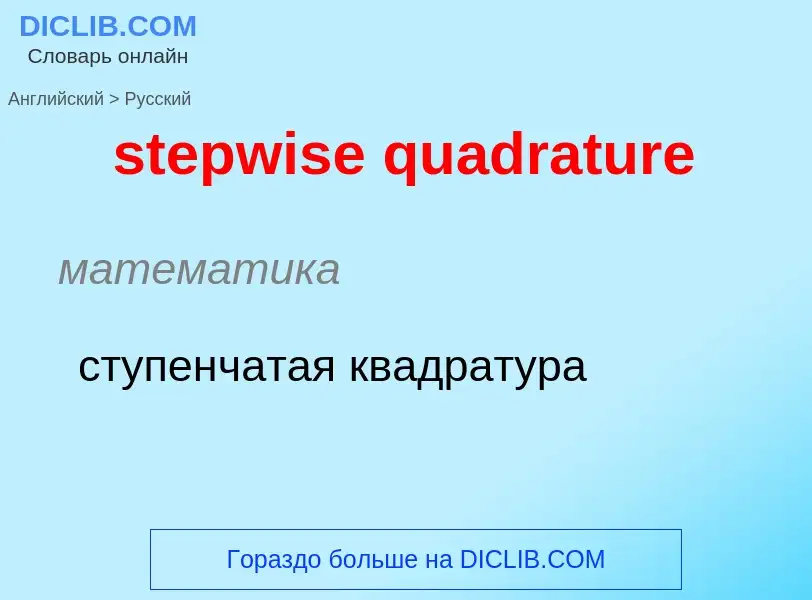Перевод и анализ слов искусственным интеллектом ChatGPT
На этой странице Вы можете получить подробный анализ слова или словосочетания, произведенный с помощью лучшей на сегодняшний день технологии искусственного интеллекта:
- как употребляется слово
- частота употребления
- используется оно чаще в устной или письменной речи
- варианты перевода слова
- примеры употребления (несколько фраз с переводом)
- этимология
stepwise quadrature - перевод на русский
математика
ступенчатая квадратура
['stepwaiz]
общая лексика
поэтапный
скачком
ступенчато
ступенчатый
медицина
постепенный
Смотрите также
наречие
общая лексика
уступами
в виде ступенек
ступеньками
постепенно
поэтапно
Определение
Википедия
In numerical analysis, a quadrature rule is an approximation of the definite integral of a function, usually stated as a weighted sum of function values at specified points within the domain of integration. (See numerical integration for more on quadrature rules.) An n-point Gaussian quadrature rule, named after Carl Friedrich Gauss, is a quadrature rule constructed to yield an exact result for polynomials of degree 2n − 1 or less by a suitable choice of the nodes xi and weights wi for i = 1, …, n. The modern formulation using orthogonal polynomials was developed by Carl Gustav Jacobi in 1826. The most common domain of integration for such a rule is taken as [−1, 1], so the rule is stated as
which is exact for polynomials of degree 2n − 1 or less. This exact rule is known as the Gauss-Legendre quadrature rule. The quadrature rule will only be an accurate approximation to the integral above if f (x) is well-approximated by a polynomial of degree 2n − 1 or less on [−1, 1].
The Gauss-Legendre quadrature rule is not typically used for integrable functions with endpoint singularities. Instead, if the integrand can be written as
where g(x) is well-approximated by a low-degree polynomial, then alternative nodes xi' and weights wi' will usually give more accurate quadrature rules. These are known as Gauss-Jacobi quadrature rules, i.e.,
Common weights include (Chebyshev–Gauss) and . One may also want to integrate over semi-infinite (Gauss-Laguerre quadrature) and infinite intervals (Gauss–Hermite quadrature).
It can be shown (see Press, et al., or Stoer and Bulirsch) that the quadrature nodes xi are the roots of a polynomial belonging to a class of orthogonal polynomials (the class orthogonal with respect to a weighted inner-product). This is a key observation for computing Gauss quadrature nodes and weights.

